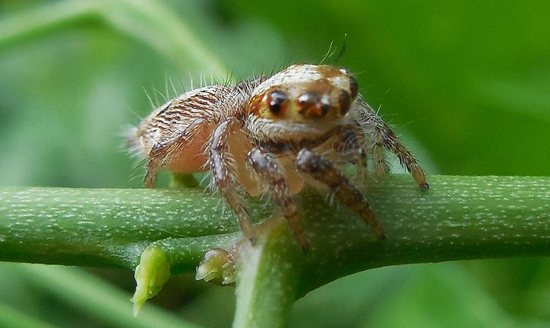
We all know about the fish-zapping powers of the electric eel, but what about the platypus, the dolphin, or the hornet?
1. Stargazer (family Uranoscopidae)
A homely fish with a dreamy name, the stargazer has modified eye muscles that can emit an electric charge. The shock isn't strong enough to stun the fish's prey, but it might distract or confuse them, giving the stargazer a chance to pounce. Scientists have hypothesized that it might also startle potential predators long enough for the stargazer to get away.
2. Guiana dolphin (Sotalia guianensis)
Where dogs and cats have whiskers, a Guiana dolphin has specialized pores called vibrissal crypts. These modified hair follicles allow the dolphin to sense electrical fields. This doesn't sound terribly useful until you consider that all of the dolphins' prey animals generate electricity in some form or another. The researchers who discovered the dolphins' electric talents have hypothesized that other marine mammals might have similar skills.
3. Oriental hornet (Vespa orientalis)
Most hornets snooze through the heat of the day, but not the oriental hornet. Curious about the insect's unusual proclivity for intense sunlight, researchers took a closer look at the hornet's exoskeleton. What they found was straight-up weird: solar panels on the hornet's body were converting sunlight into electricity. The exact purpose of the bug's juice remains to be seen, but it's unlikely the hornets would be bothering to make it if they didn't need it.
4. & 5. Platypus (Ornithorhynchus anatinus) and Echidna (family Tachyglossidae)
Most mammals give birth to live babies. That's kind of part of being a mammal. But the monotremes - platypuses and echidnas - want nothing to do with that messy business. They lay eggs like civilized animals, and they don't care what you think. But their disregard for normal mammal behaviour doesn't stop when the egg drops. The echidna's snout and the platypus's bill are packed with sensitive cells that allow them to sense electricity. This comes in handy for hunting underwater and underground in the dark.
6. Electric catfish (family Malapteruridae)
Like their cousins, the badly named electric eels (which aren't eels at all), electric catfish have organs in their heads that allow them to zap all comers with 350 volts of unpleasantness. Through the magic of the Internet, you can actually watch as this genius fish-keeper grabs his catfish "to see what happens." (Spoiler: The repeated shocks were "not comfortable at all.")
7. Bumblebee (genus Bombus)
Bees are, well, busy. They don't have time to waste visiting flowers that have already been emptied by their co-workers. Fortunately, the flowers can help them out. Each blossom broadcasts a variable electrical signal, like a hotel's VACANCY sign. After a bee caller leaves, the now-sapped flower switches its field to broadcast NO VACANCY, which tells incoming bees to try some other bloom.
8. Sharks (clade Selachimorpha)
The shark doesn't really do anything halfway. Its ability to sense electricity is 10,000 times stronger than any other animal's. This skill is so developed that scientists call it a "sixth sense," and it might help in more ways than one. Although sharks look tough, they're in trouble, and they face huge risks from commercial fishing. Some researchers have proposed sticking big magnets or electropositive metals to fishing boats. Early studies have shown that the unusual electrical signals may give the sharks enough warning to get out of the boats' way.
9. Spiders (order Araneae)
Is there nothing spiders can't do? They dance, they pounce, they purr, and some can even make music. And now, it turns out, they also exploit electricity. Spiders smear their webs with a special electrostatic glue that actually allows the web to reach out and grab charged particles like water, pollen, and prey.
Top image: The early bumblebee (Bombus pratorum). Credit: Bernie/Wikimedia Commons // Public Domain.







No comments:
Post a Comment
Please adhere to proper blog etiquette when posting your comments. This blog owner will exercise his absolution discretion in allowing or rejecting any comments that are deemed seditious, defamatory, libelous, racist, vulgar, insulting, and other remarks that exhibit similar characteristics. If you insist on using anonymous comments, please write your name or other IDs at the end of your message.